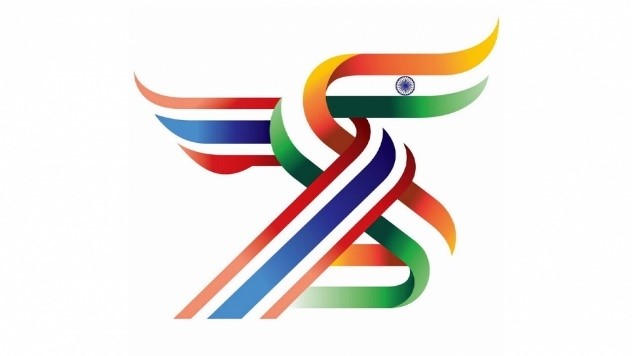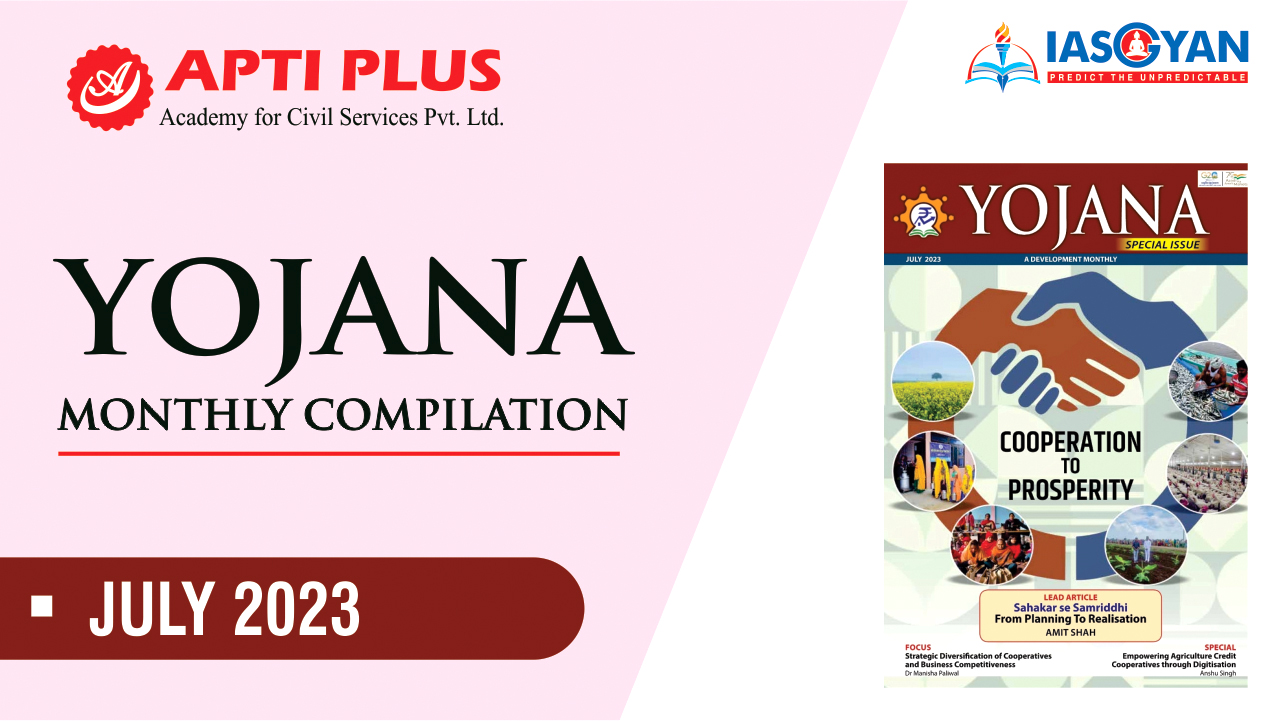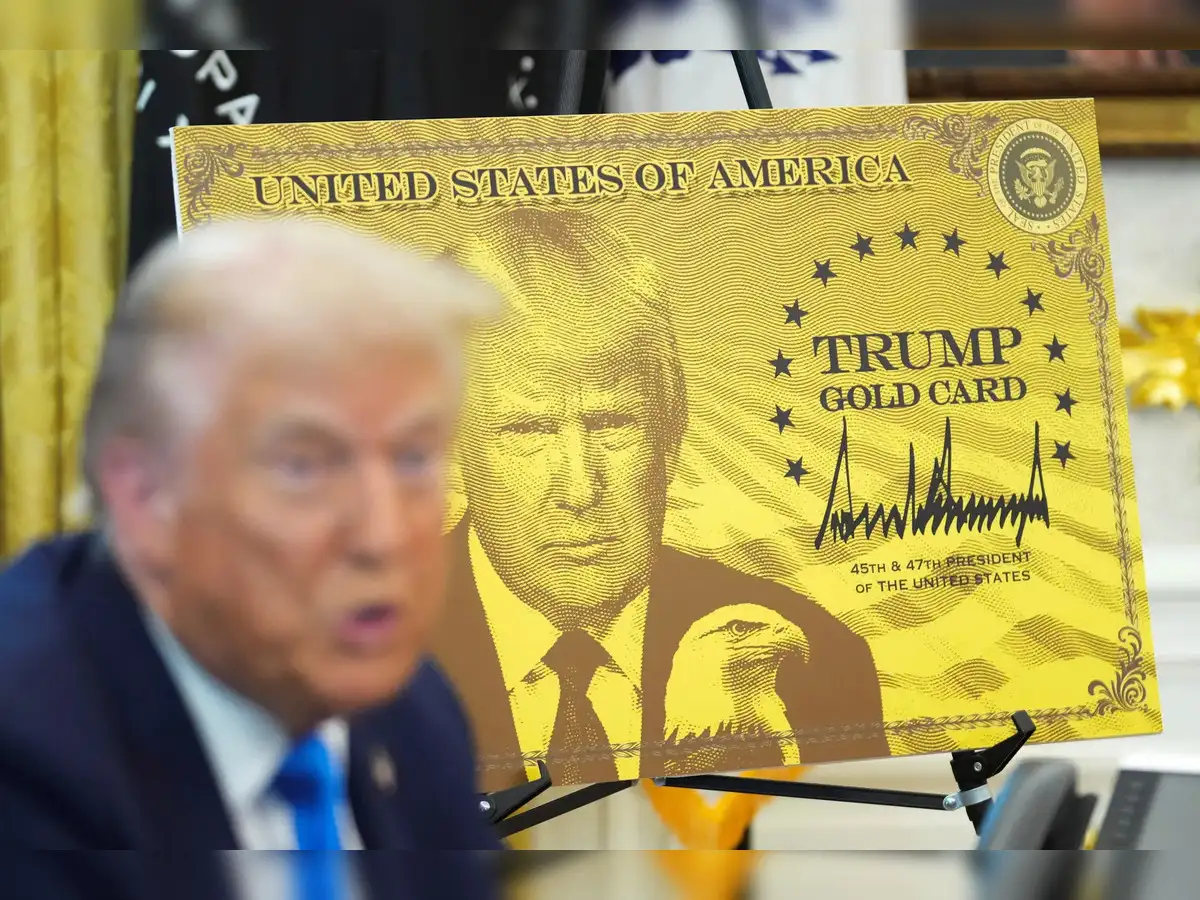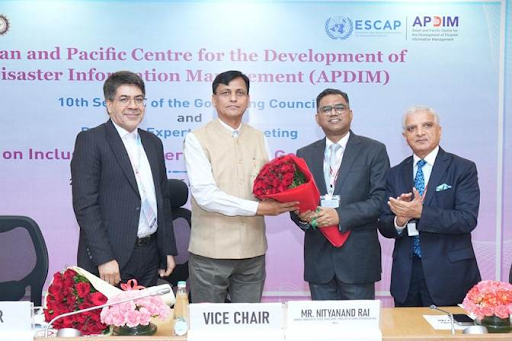Description

Disclaimer: Copyright infringement not intended.
Context
- The Prime Minister, Shri Narendra Modi has congratulated Mr. Srettha Thavisin on his election as the Prime Minister of Thailand.
India Thailand Relations
Ancient Times: Cultural
- The economic and cultural relations between the two could be traced back more than 2000 years and provide the very foundation of the bilateral relationship.
- The ancient cultural threads that linked Thailand, Laos, Cambodia, and Myanmar have often been so-called the ‘Indianised’ States in Southeast Asia.
- India and Thailand located in each other’s extended neighborhood share a unique civilizational linkage with the great Indian Emperor Ashoka, who sent Buddhist missionaries to Thailand thus making it one of the major religions in Thailand and the rest of Southeast Asia.
- Further, Indian traders since ancient times have been using the water between the two nations in order to carry out trade.
- Ancient Thailand’s contact with India through trade eventually brought ideas, culture, language and technologies from a region where urban centers had already developed. This led to larger settlements appearing in the lower Mekong basin, and to the west in an area stretching from the lower Chao Phraya basin across the hills on the neck of the peninsula to its western coast.
Modern Times
- Thailand was one of the first countries to establish diplomatic relations with India in 1947.
- India and Thailand, located in each other’s extended neighborhood, share a maritime boundary in the Andaman Sea.
- India’s bilateral relations with Thailand are rooted in history, age-old social and cultural interactions and extensive people-to-people contacts.
- The shared link of Buddhism is reflected in regular pilgrimages to places of Buddhist interest in India by a large number of Thai people. Hindu elements can be found among those reflected in Thai architecture, arts, sculpture, dance, drama and literature.
- Thai language incorporates Pali and Sanskrit influences. A large Indian diaspora living and working in Thailand is another Important bond.
Bilateral Relations
- In the past two decades, with regular political exchanges, growing trade and investment, India’s ties with Thailand have now evolved into a comprehensive partnership.
- India’s ‘Act East’ policy has been complemented by Thailand’s ‘Act West’ policy in bringing the two countries closer.
- Both countries are important regional partners linking South and Southeast Asia. They cooperate closely in the ASEAN, East Asia Summit (EAS) and Bay of Bengal Initiative for MultiSectoral Technical and Economic Cooperation (BIMSTEC) groupings as also in Mekong Ganga Cooperation (MGC), Asia Cooperation Dialogue (ACD), Indian Ocean Rim Association (IORA) and Ayeyawady-Chao Phraya-Mekong Economic Cooperation Strategy (ACMECS).
- The India-ASEAN Agreement on Trade in Goods was implemented in January 2010 and the India-ASEAN FTA in Services and Investment was signed in September 2014 and came into force in July 2015.
India-Thailand Trade Ties
- In 2020, the trade figures stood at US$ 9.76 billion despite the pandemic situation. In 2021, it reached a record high of around US$ 15 billion.
- Thailand occupies the 26th position in FDI equity inflows into India with a cumulative FDI amount of US$ 1,172 million from April 2022 to September 2022.
- According to the Tourism Authority of Thailand, on 27 May 2022, Indians became the largest group of tourists to Thailand, with more than 100,000 arrivals up to 27 May 2022, with the potential of touching 600,000 by year-end.
- In 2022 (April-November 2022) the trade figures between India and Thailand stood at US$ 11,698 million.

Exports
- India exported 4,575 commodities to Thailand in FY 2021-22.
- India’s export to Thailand stood at US$ 5.7 billion in FY 2021-22.
- Major exported items from India to Thailand include pearls, precious or semi-precious stones/metals and articles thereof; imitation jewellery and coin (US$ 1,163.97 million); followed by nuclear reactors, boilers, machinery and mechanical appliances; parts thereof (US$ 1,096.50 million) in FY 2021-22.
- India’s export to Thailand stood at US$ 3.9 billion from April-November 2022.
- Major exported items from India to Thailand include pearl, precious or semi-precious stones/metals and articles thereof (US$ 794 million) followed by IC engines and parts (US$ 449 million) etc. during April-November 2022.
Imports
- India imported 3,188 commodities from Thailand in FY 2021-22.
- India’s imports from Thailand stood at US$ 9.3 billion in FY 2021-22.
- Major items imported by India from Thailand include nuclear reactors, boilers, machinery and mechanical appliances; parts thereof (US$ 1,473.87 million); followed by plastics and articles thereof (US$ 1,369.04 million) in FY 2021-22.
- India’s imports from Thailand stood at US$ 7.7 billion from April-November 2022.
- Major items imported from India to Thailand include vegetable oils (US$ 1,051 million) followed by plastic raw materials (US$ 859 million) etc. from April-November 2022.
Economic Relations and Investments
- Since 1947, India has enjoyed dynamic bilateral relations with Thailand. 2022 marks the 75th year of diplomatic ties between the two nations. Quite interestingly, India’s ‘Act East’ and Thailand’s ‘Look West’ policy have provided the outline for enhancing mutual diplomatic as well as economic collaboration in a positive direction. Major Indian companies in Thailand include – Tata Steel Thailand, Tata Consultancy Services, Aditya Birla Group, Tech Mahindra, Kirloskar Brothers Ltd., etc. Leading Thai companies in the fields of agro-processing, construction, automotive, engineering and banking have an active and growing business presence in India.
- Thailand is the fourth largest trading destination for India in the ASEAN region. Bilateral trade between India and Thailand has reached an all-time high of around US$ 15 billion in 2021-22. The Indian market remains attractive to Thai investors. From April-November 2022 the bilateral trade between India and Thailand stood at US$ 11,698 million. Commerce, Culture and Connectivity define the future focus areas of cooperation between India and Thailand.
- India provides huge opportunities for investment in infrastructure, including roads, ports, the power sector, food processing, renewable energy, digital technology, logistics and electric vehicles. India’s Act East policy complemented by Thailand’s Act West policy has provided the basis for building a multi-faceted partnership between the two countries. Northeast India is the gateway to Thailand and other South East Asian countries.
Defence Cooperation
- India and Thailand share a strategic partnership and defence is a key pillar of this cooperation. The bilateral defence engagements have expanded over a period of time to include wide ranging contacts between the two countries including Defence Dialogue meeting, military-to-military exchanges, high-level visits, capacity building and training programmes and bilateral exercises.
- The MoU on Defence Cooperation between India and Thailand was signed on 25 Jan 2012. Since 2015, India has been participating in Ex-Cobra Gold, the largest Asia Pacific Military exercise as ‘Observer Plus’ category.
- The other ongoing defence cooperation initiatives comprises of bi-annual joint maritime patrolling by the navies of both countries, annual staff talks, subject matter expert exchange visits and training of officers at each other’s institutions.
- The ‘AUSTRA HIND 22’ bilateral training exercise between contingents of the Indian Army and the Australian Army began in 2022 with all arms and services contingents from both armies participating.
- The Malabar series of maritime exercise commenced in 1992 as a bilateral exercise between Indian Navy and US Navy and has grown in stature over the years to include four prominent navies in the Indo-Pacific Region. The 2020 edition witnessed the maiden participation of the Royal Australian Navy (RAN).
Cooperation in the field of Education
- MoU on Cooperation in the field of Education was signed in 2005. During 2018-19, Government of India offered 72 scholarships to Thai students under its various schemes (ITEC – 40, ICCR sponsored schemes – 24 and Hindi scholarship – 8).
- Currently there are five India Studies Centers in Thailand at Chulalongkorn University, Silpakorn University, Mahidol University, Thammasat University and Chiang Mai University. In addition, India launched 1000 Doctoral Fellowships at the prestigious Indian Institutes of Technology for the nationals of ASEAN countries, including 100 slots for Thai scholars.
Security
- The Indo-Thai Security Relationship has the potential to create a distinct bilateral security cooperation that would bolster both countries’ security resolve in the Indo-Pacific region.
- The Royal Thai Navy, with a fleet strength of over 130 vessels and capabilities ranging from ships with surface-to-air missiles, fast attack craft, large coastal patrol craft, coastal minelayers, coastal minesweepers, landing craft and training ships, provides the Indian Navy with one of the most inter-operably aligned strategic partner in Southeast Asia.
- To that end, the emerging Indo-Thai security arc extending from the Andaman Sea to the Gulf of Thailand could create a new strategic continuum. Thailand’s strategic Sattahip Bay and Port Blair in Andaman are potential bookends in the Indo-Thai security architecture.
- India’s assistance to the Royal Thai Navy in fulfilling the latter’s responsibilities in its mission space extends from the Gulf of Thailand to the Indian Ocean.
- Diplomatically, India has focused on bilateral security engagements with Thailand as well as multilateral security groupings like ADMM+8, ARF and Shangri-La Dialogue. This balance is a critical feature of Indo-Thai security cooperation.
Suggestions
- The real challenge for both India and Thailand would be to marry their own regional goals in the Indo-Pacific, while still smartly navigating the pulls from China and the USA.
- As such, a few policy recommendations for either side should be in order. Both sides should see their expanding maritime vision towards each other in the context of larger role in regional security of Southeast Asia and South Asia where BIMSTEC becomes the pivot for both countries’ economic-security dynamic.
- Increased frequency of naval exercises by India and Thailand either bilaterally or as part of multilateral fora should be undertaken in order to strengthen each other’s stakes in regional security.
- And finally, India–Thailand security partnership could become a strong platform for India’s inclusion in the Malacca Straits Patrol (MSP), which is a set of practical co-operative measures undertaken by Indonesia, Malaysia, Singapore and Thailand to ensure the security of the Straits of Malacca and Singapore (SOMS).
- India considers its inclusion in MSP as critical for its net-security-provider role in the Indo-Pacific region as well as for a sustained security architecture in Indo-Pacific. A strong security relationship between India and Thailand could go a long way in realising such regional goals for both countries.
Cultural Cooperation
- An Indian Cultural Centre was opened in Bangkok in September 2009 [It has since been renamed as the Swami Vivekananda Cultural Centre].
- The Cultural Exchange Programme for 2016-19 was signed during the visit of Thai PM to India in June 2016.
- A number of India Studies Centers are operational in prestigious Thai Universities.
- MoU on Cooperation in the field of Education was signed in 2005.
- The total number of people of Indian origin in Thailand is estimated to be around 175,000 and 20,000 NRIs, majority of whom are concentrated in Bangkok.
Connectivity
- In terms of connectivity projects, Thailand has been developing the Ranong port to increase trade with India’s Chennai and Kolkata ports.
- The most awaited India–Myanmar–Thailand Trilateral Highway is expected to expand land connectivity through Northeast India and Southeast Asia.
- For the development of India’s Northeast, the trilateral highway is the crucial entry point to ASEAN that facilitates trade and commerce as well as people-to-people links.
Tourism
- Tourism is another part that needs a boost. Before the pandemic struck, and travel restrictions were imposed, Indians traveling to Thailand generated US $24.9 million in profits. India is an important tourist destination for the Thais as well.
- Buddhism is a common thread that runs through both nations.
- Millions of Thai Buddhists visit Lumbini, Bodh Gaya, Sarnath, and Kushinagar in India for their religious trips.
- Additionally, Himalayan tourism remains a lucrative destination for its scenic beauty, snow, and skiing opportunities that New Delhi intends to showcase further.
- Recently the Thai PM has endorsed an air Travel Bubble Scheme to encourage more Indians to visit the nation. Air travel bubbles have become an alternative for countries to allow tourists to travel if regular flights remain suspended.
Strategic Relations
‘Act East-West’
- Thailand is strategically an important player for India, both in the bilateral and regional spheres.
- According to the ‘Act East’ policy, Thailand, like Myanmar, is a gateway to South East Asia.
- Likewise, according to ‘Act West,’ India is Thailand’s opening to South Asia. Both nations are prime members of several multilateral forums, for instance, BIMSTEC, East Asia Summit, IORA, and Asia Cooperation dialogue, MGC, and they also cooperate closely in ASEAN meetings.
Indian Diaspora
- Indian diaspora has been an integral part of the Thai community for more than 150 years. The community serves as a significant link between both nations and contributes significantly to the GDP of Thailand.

Future Prospects
- There is huge potential for the growth of trade between India and Thailand.
- To achieve this, addressing issues regarding the tariff lines and potential trade barriers will be significant. In this regard, reducing import duty charges through bilateral engagements will be essential for expanding trade and investments.
- There are also prospects for advancing business opportunities between the two. Thailand 4.0, i.e., the new economic model and the recently launched Bio Circular Green economic model for inclusive and sustainable growth, provides further weight to the already existing partnership.
- The Confederation of Indian Industry (CII) has been organising and co-hosting conferences, summits, and business meets to reinforce India–Thailand business engagements. The India–Thai Chamber of Commerce set up in Bangkok opens opportunities for its members to work with government and non-government organisations to enhance their business.
- India’s remarkable growth of start-ups, with many achieving unicorn status, presents huge opportunities for collaboration with Thailand. The emergence of ‘Aatmanirbhar Bharat’ is crucial since the latter can invest in India to reduce the supply chain gaps. The products made in India can be likewise traded by Thailand to the Indian diaspora and the world.
- The Indo-Thai security relationship has the potential to create a distinct bilateral security cooperation that would bolster both countries' security resolve in the Indo-Pacific region.
- While both nations have successfully conducted the joint air exercise, and have restarted work on rail connectivity, Thailand continues to strengthen its engagements with other players such as the United States, Japan, and India to balance its stakes.
- In this respect, the growing footprints of India will remain crucial. Thus, the swift completion of connectivity projects will hold the key to bolstering trade, tourism, and economic development.
|
PRACTICE QUESTION
Q. The real challenge for both India and Thailand would be to marry their own regional goals in the Indo-Pacific, while still smartly navigating the pulls from China and the USA. Both sides should see their expanding maritime vision towards each other in the context of a larger role in regional security of Southeast Asia and South Asia where BIMSTEC becomes the pivot for both countries’ economic-security dynamic. Analyse.
|
https://epaper.thehindu.com/ccidist-ws/th/th_delhi/issues/48969/OPS/GB1BLIV98.1.png?cropFromPage=true












